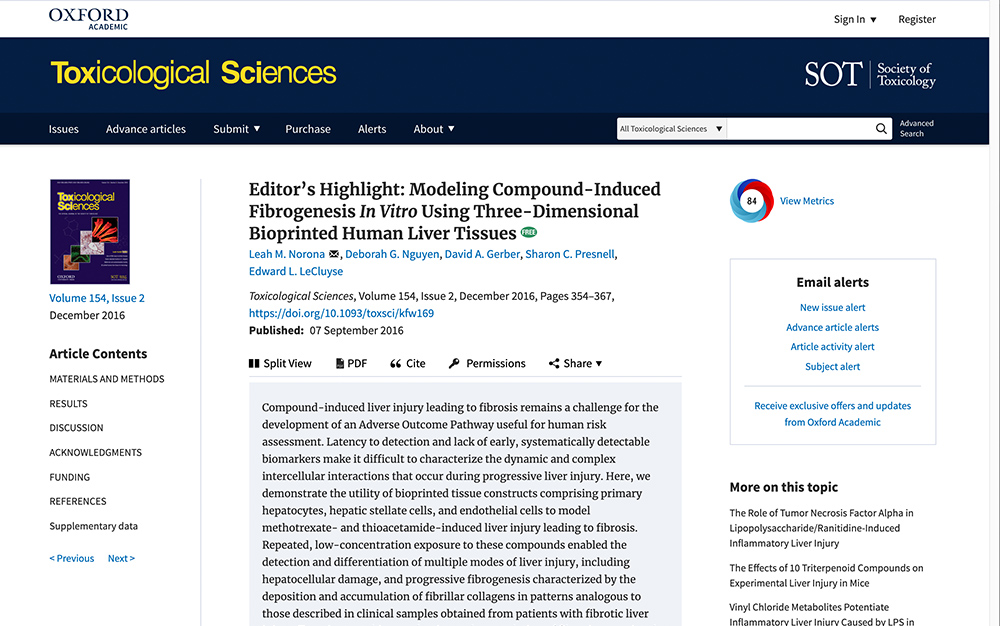Modeling compound-induced fibrogenesis in vitro using three-dimensional bioprinted human liver tissues
Publication Summary:
Compound-induced liver injury leading to fibrosis remains a challenge for the development of an Adverse Outcome Pathway useful for human risk assessment. Latency to detection and lack of early, systematically detectable biomarkers make it difficult to characterize the dynamic and complex intercellular interactions that occur during progressive liver injury. Here, we demonstrate the utility of bioprinted tissue constructs comprising primary hepatocytes, hepatic stellate cells, and endothelial cells to model methotrexate- and thioacetamide-induced liver injury leading to fibrosis. Repeated, low-concentration exposure to these compounds enabled the detection and differentiation of multiple modes of liver injury, including hepatocellular damage, and progressive fibrogenesis characterized by the deposition and accumulation of fibrillar collagens in patterns analogous to those described in clinical samples obtained from patients with fibrotic liver injury. Transient cytokine production and upregulation of fibrosis-associated genes ACTA2 and COL1A1 mimics hallmark features of a classic wound-healing response. A surge in proinflammatory cytokines (eg, IL-8, IL-1β) during the early culture time period is followed by concentration- and treatment-dependent alterations in immunomodulatory and chemotactic cytokines such as IL-13, IL-6, and MCP-1. These combined data provide strong proof-of-concept that 3D bioprinted liver tissues can recapitulate drug-, chemical-, and TGF-β1-induced fibrogenesis at the cellular, molecular, and histological levels and underscore the value of the model for further exploration of compound-specific fibrogenic responses. This novel system will enable a more comprehensive characterization of key attributes unique to fibrogenic agents during the onset and progression of liver injury as well as mechanistic insights, thus improving compound risk assessment.
View Publication
